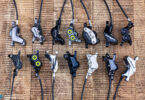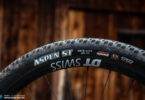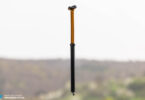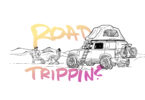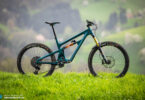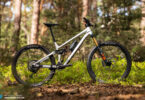Regardless of whether it is a full-suspension trailer, a wooden balance bike that grows with your child or a mini freeride bike, our comprehensive kids bike buyer’s guide includes a wide variety of concepts and some ingenious solutions. That said, we also discovered huge differences in quality, lazy compromises and absolute no-gos!


Life with kids is amazing, especially when you can rediscover the world with them on two wheels! They’re full of enthusiasm, surprisingly confident and learn new things super quickly. However, they also grow as fast as they learn, demanding new and suitable equipment as they go. The huge range of balance bikes, kids’ bikes, eMTBs for kids and trailers is great to have but also difficult for parents to navigate, not just in terms of finding the right size. To help you avoid spending your money on the wrong bike, our buyer’s guide takes a closer look at twelve different models and also tells you which bike is best for your child.
Based on a few key questions, we will help you clarify what kind of bike your little rippers really need. The following tips and tricks should help you to find the most suitable rather than the most expensive bike, not just allowing kids to have the most fun but also helping them develop to the best of their abilities! Cycling offers children an incredibly rich breeding ground for many new learning experiences and riding on two wheels quickly pushes their coordinative skills to the next level. They get to burn off energy, gain physical fitness and will have to learn to deal with occasional setbacks and failures as they master exciting new skills and challenges. Ultimately, they’ll be all the more proud that they dared and made it, already looking for the next thing to take on. There’s nothing better to build their confidence! Along with all of this, they’ll also make new friends.
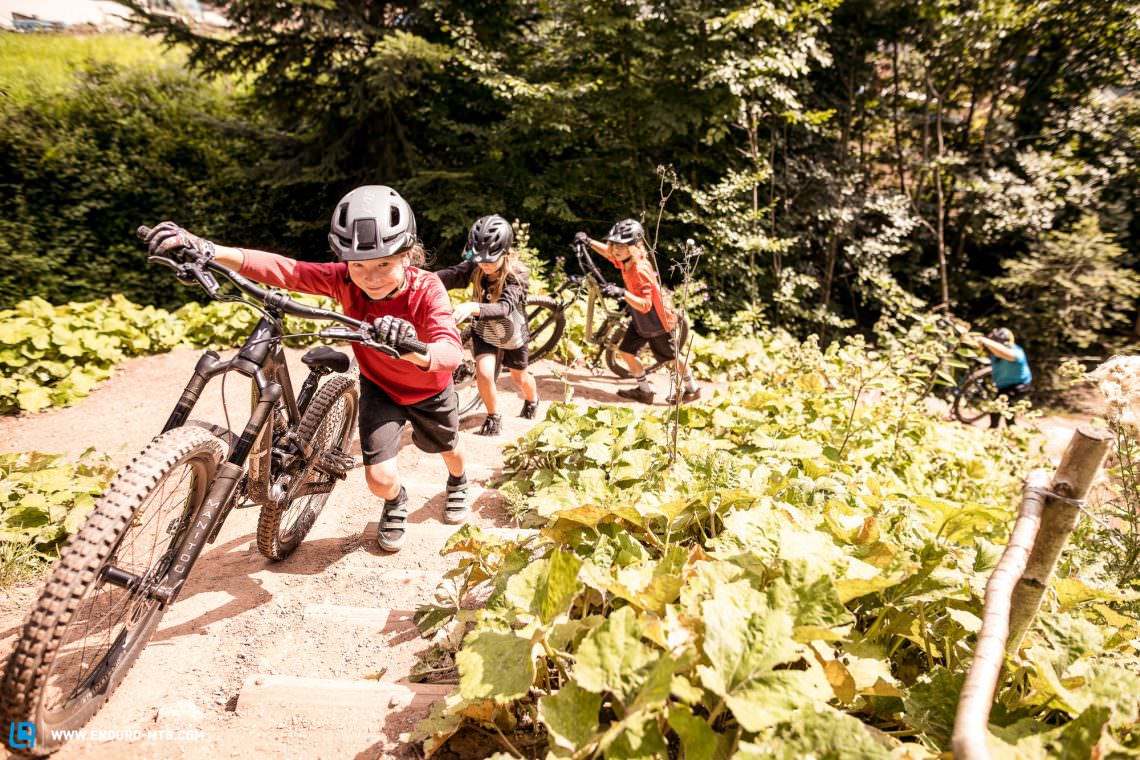
As if that isn’t enough, it quickly opens up forgotten recreational opportunities for the whole family when your kids can also come along on two wheels! Regardless of whether they’re already pedalling on a kids bike, sitting in the back of a trailer or experiencing the wind in their hair as they sit in front of you and hold on to the handlebar with mom or dad riding, the moment we get our kids excited about riding on two wheels, it not only opens up unimagined opportunities for them but also for us! Suddenly tours and longer trips become possible again and the more you can ride the more quality time you get. What difference does it make if you have to lure your little ones onto bikes with the help of a little electric assistance if that ultimately sparks their enthusiasm for bicycles? With the support of a motor, you don’t have to turn back after reaching the ice cream parlour and can even go for a ride around the lake. You’ll be hard pushed to find a hobby that helps our little ones grow as much as cycling. Their favourite toy on two wheels – happy skid, happy kid!
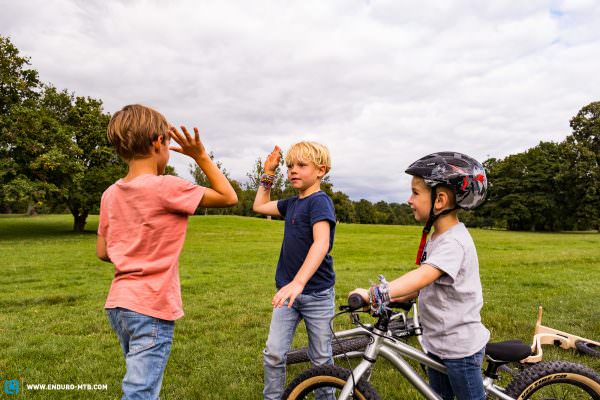
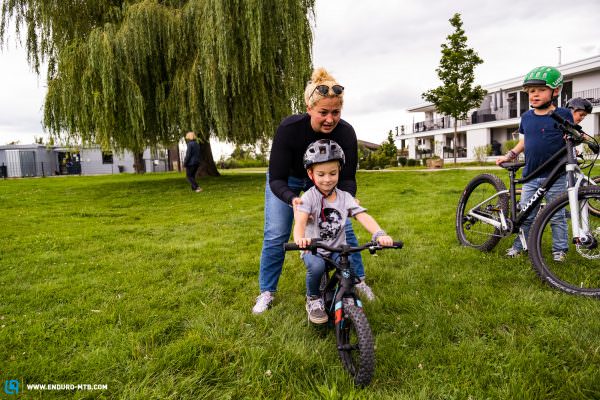
To come to the results that we want to share with you here, we had the chance to take on several new roles. Suddenly, we found ourselves discussing kids’ bicycles, balance bikes and trailers instead of suspension details and high-end mountain bike components for adults. This buyer’s guide required us to consider a much wider range of aspects! However, since it’s our job as editors at ENDURO, we obviously had a keen eye for the technical details that we found on the kids’ bikes. We asked ourselves how long the concepts would last, whether they made sense and some just left us scratching our heads, keeping in mind that different use cases require different ideas. Since we can’t help it, we will also tell you which bikes blew us away in terms of looks and cool factor!
This buyer’s guide allowed us to slip into the role of being parents. Whether as a parent, an uncle or an aunt, the countless experiences that we’ve already had with the kids surrounding us, whether that was with or without a bike, proved to be invaluable for this article. That said, we called in some assistance from the tiny testers in our area to experience first-hand how children approach the various bikes and how well they get on with them. Shout-out to the boys and girls from the local kindergarten! And yes, writing this article also allowed us to be kids again. Who would we be if we didn’t test ride the bikes ourselves? However, we cannot attest to the durability of the components nor about the handling that the children themselves will experience on the various bikes, as these statements simply wouldn’t be well-founded. Nevertheless, we still made a wealth of interesting discoveries!

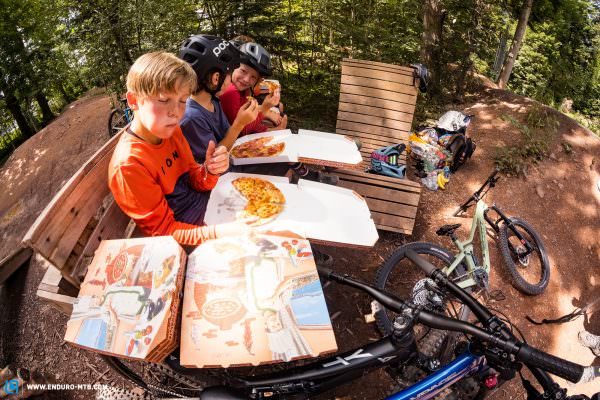
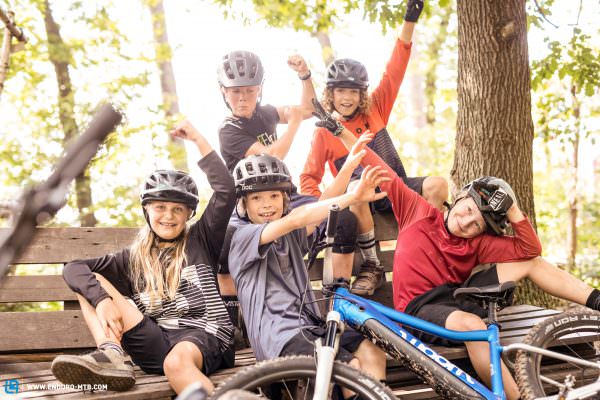
We quickly found out that not all children’s bikes are equal! The selection of kids’ bikes, balance bikes, trailers and seats is huge. Unfortunately, you cannot judge a bike’s quality or functionality based on its price in this wealth of options. We weren’t convinced of some of the higher-priced concepts while a few of our favourites also turned out to be quite fairly priced. Some components seemed like DIY projects in terms of their quality. In other cases, the components made a solid impression, though their dimensions simply aren’t suitable for children as they’ve been taken from the adult sector. This has functional disadvantages, such as when the handlebars and grips are too thick or the q-factor is too wide and children have to stand on the pedals with their feet spread apart, for example. However, we also found some really good ideas on the market, catering to every requirement that we had of the various kids’ bikes concepts. Unfortunately, the ingenious solutions weren’t all combined on one bike, but they do exist!
In the truest sense of the word, kids’ bikes should be vehicles for personal development. They must allow kids to push their boundaries, learn new skills and make friends, and they have to be safe and reliable while doing so.

What do parents want? What do children want?
Let’s start with the kids. Most of all, they want to have fun! Nothing on the bike should be uncomfortable or even hurt. It should roll easily, must handle all kinds of manoeuvres and should allow kids to pick up from the skill level they’re at, whether they’re passengers, balance bikers or already conquering forest paths and their commute to school all on their own. Children are unlikely to notice any refined details in the geometry of a frame. Rather, it’s much more important whether the rubber grips are too soft and therefore tear open easily at the ends, allowing the sharp edges of the handlebar to protrude and cause injuries. Or whether the brake levers can be ergonomically adjusted, giving children a good grip on them with their small hands! Of course, the bike should look cool too. In the end, balance bikes and children’s bikes should fuel our kids’ spirit of adventure and make them want to ride!
From the parents’ point of view, it’s clear, sharp edges and potential hazards on the bike are an absolute no-go! Falling over and crashing is a part of learning to ride and to keep kids as safe as possible, the bike must be adequately prepared for this. The construction of the bike itself also has to be solid and reliable, so that you don’t have to worry about damage and defects when it gets ridden hard and thrown around. And a price of up to 3,000 euros needs to be justified. After all, the Easter bunny and Santa Claus also have to get paid.

However, as parents, we want a lot more than that. We want our children to develop healthily, that they grow by mastering challenges and learn to believe in themselves! We want our children to learn valuable lessons, discover their own path, and find out who they are, who they can be, and who they want to be! And we want our children to encounter good people, make fulfilling acquaintances and lifelong friendships. And you know what, bikes can do all this for your children!

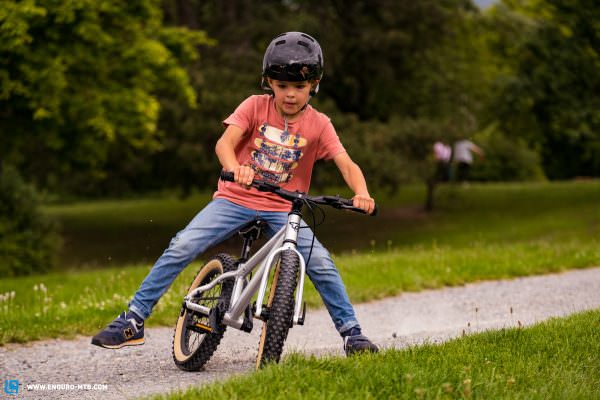
Of course, it won’t all happen at once, but even the first ride in the trailer or on the kids seat can get your kids excited about joint outdoor activities, learning to love the wind that tickles their noses and makes them grin. Balance bikes open the door to a whole host of lessons that are valuable well beyond two wheels. Kids learn to balance, react and train their hand-eye coordination. As their skills grow, so do the challenges they set themselves and before you know it the slalom course demarcated with chalk in front of the garage will give way to the first drop down the curb. When children ride their bikes together, there’s no limit to their creativity. Play catch on a bike? Brilliant! As you probably well know, when pushing boundaries and trying out new things, there will be some crashes, which is why wearing a helmet goes without saying. But hey, besides a few scratches, the little ones get so much out of their adventures on two wheels that the occasional tears are definitely worth it! At the same time, they can make new friends or discuss who gets right of way. There’s no better way to build character. What’s also cool is that it’s a hobby that can grow with them: at some point the bike crew they’re maintaining their bikes, digging new lines and riding trails with will be their best friends!
By putting your kids on bicycles, you’re not only making a valuable contribution to their personal development but you’re also doing something good for your family leisure time! If you don’t feel like standing around during soccer training then get your whole family on bikes and head out into the woods! We’ve already delved into how you can do this here. You will rediscover spending quality time together! The most important thing is that you ride and have fun together. All of these are good reasons to buy your kid a bike today and let them roll off into their future on two wheels.
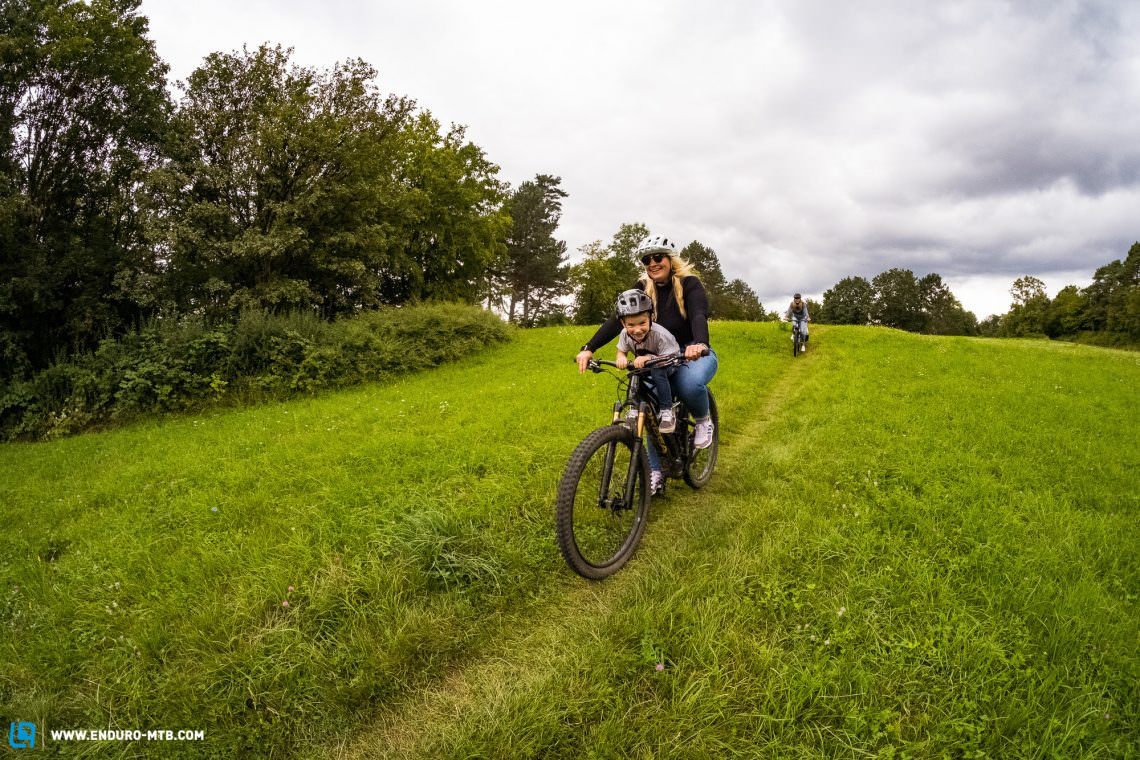
Which concept is the best?
Since the range of kids’ bikes is so big, we will start by giving you an overview of the existing options. We will take a look at all the basic types of kids’ bikes that could be of interest to your child, whether they’re a toddler or teenager. As such, we’ve deliberately decided to start with trailers in which your offspring is just a passenger. The child can be strapped in, take a nap while riding and otherwise be chauffeured around in a relaxed manner with biscuits, something to drink and sand shovel tucked into the side pockets. In contrast, your child has to be a lot more active when sitting in front of you and holding onto the handlebar with their own strength. This requires their full attention and a nap is no longer an option! The next step up are balance bikes, allowing children to propel and support themselves with their feet on the ground like the Flintstones. The rest of the handling is just like a normal bike. If you take a balance bike and add pedals, you eventually arrive at a kids bike. But there are further segmentations within this group. There is a lot of variety for children from 100–165 cm. Some of the bikes that we looked at get by without suspension, allowing kids to pedal to school, to their friends and back home again. Some have a suspension fork and thus invite kids on their first excursions into bumpy terrain. Others even have full suspension and look like mini downhill bikes, offering extreme off-road and downhill capabilities that aren’t far off from their big brothers in the bike park! In principle, each of these concepts are available to you both with and without a motor.
In summary, you’ll find anything you can think of! We found both bad as well as really good ideas and detailed solutions in each of these categories. To find out which concept will work for your child, we first have to find out what type of rider they are.
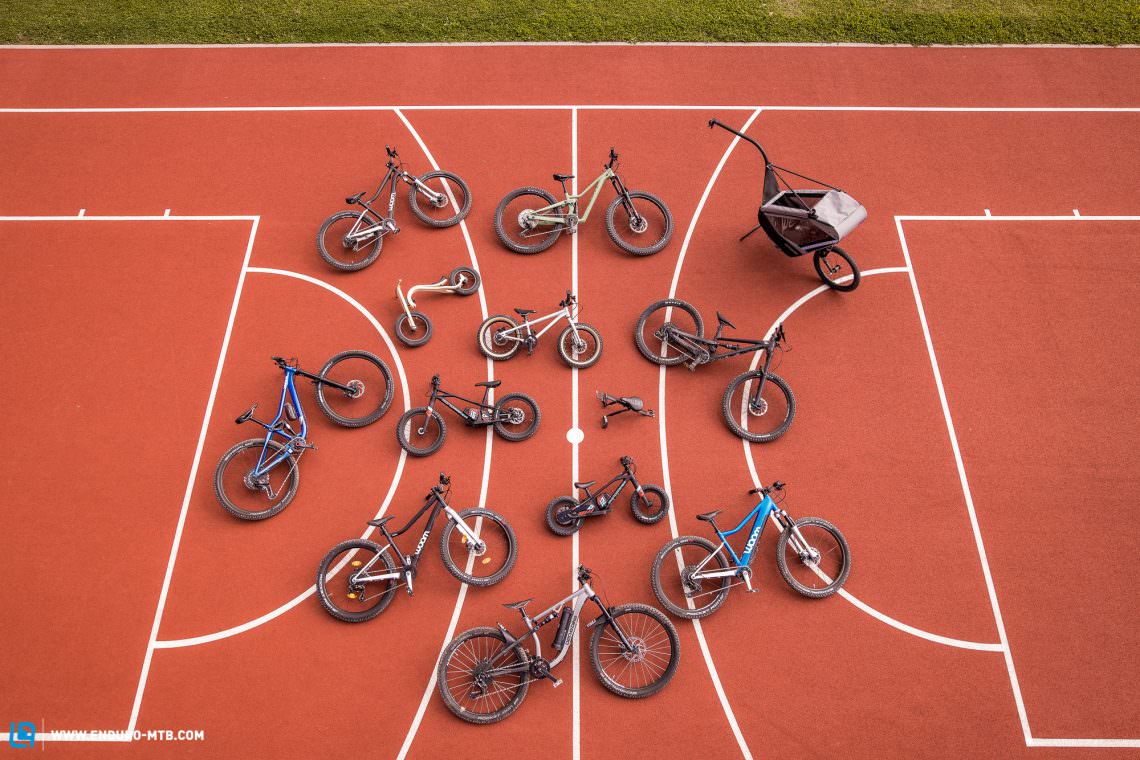
Rider types
When choosing a kids bike, just going by age, gender and current riding skills is a very hit and miss affair. With children, age is a poor indication of size, and whether they’re a boy or girl hardly plays a role when it comes to bikes. Considering their steep learning curves and ever growing expectations, their current skill level is never more than a snapshot and they can be on a completely different level in just a few weeks from now. With that in mind, don’t ask yourself where your child is right now but rather where it wants to go! What type of rider is your child?
What type of rider is your child? What are their ambitions?
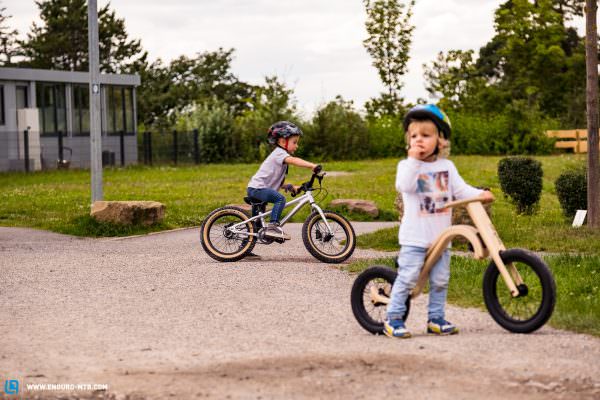

You read that right, we’re talking about rider types! And no, that doesn’t mean you should ask your child whether they would rather be a roadie or a mountain biker (a mountain biker, obviously…). Instead, dividing kids into these two very simple rider types is an excellent decision-making tool when choosing the right bike. Different brands offer completely different interpretations and concepts of children’s bicycles in the same range of sizes, so that we had to find a better way of choosing the right bike. We’re asking, is your boy or girl an easy rider or a shredder? Combining this with their size and weight gives you a much more accurate indication of your kid’s real riding needs and how you can meet those.
Easy Rider
Many kids are easy riders. They want a bike to ride and play with and to get from A to B, to school, to a friend’s house or to the swimming pool. Easy riders love their bike because it rolls easily on compacted roads and paths, it’s nice and light and maybe it even has an electric motor to support them on longer rides. A balance bike or kids bike for easy riders has to be fun to ride to school and on longer rides with the whole family, have practical features and, of course, it must look cool too. However, it also has to be compatible with other hobbies.
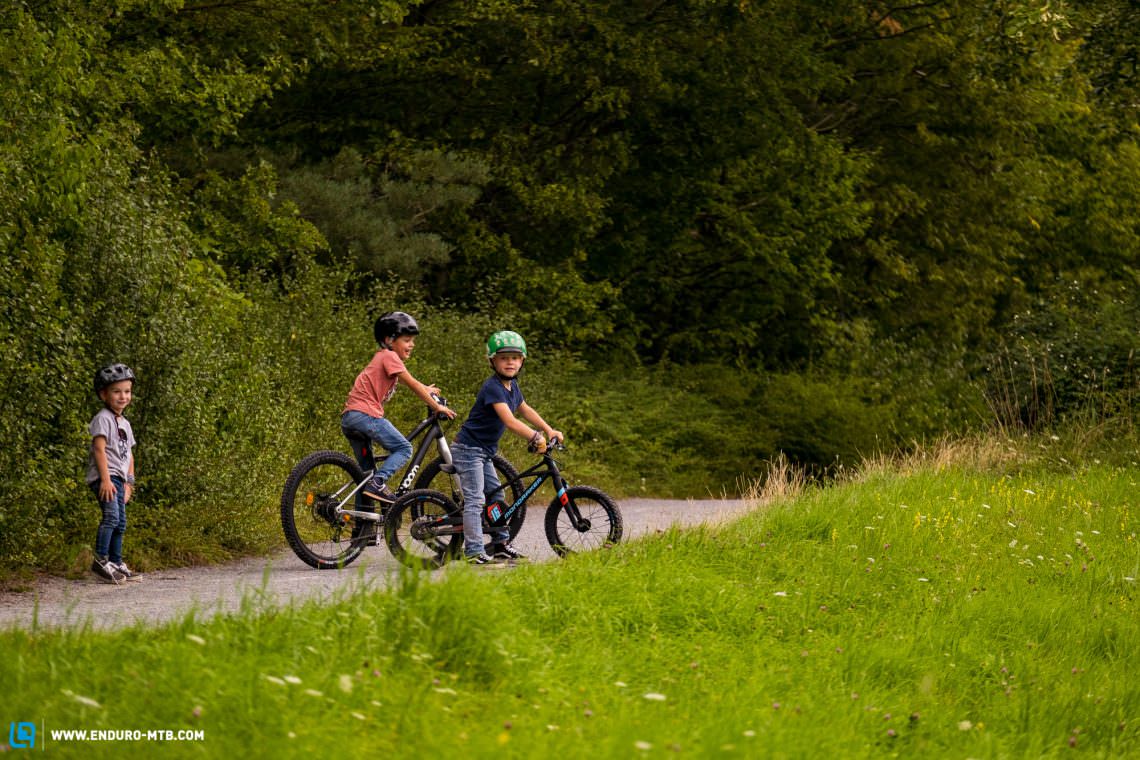
Shredder
Shredders are born with a few screws loose in their head. Riding to school is okay, but shredders are after more. They want a forest floor under their tires and dust on their faces. When hitting the first small jumps, they don’t become fearful but wide awake. Longer rides aren’t really their thing, preferring trails, self-built lines and fast switchbacks. A balance bike or kids bike for shredders must have everything that can pave the way for them to make it from a small to a large shredder, including knobbly tires!
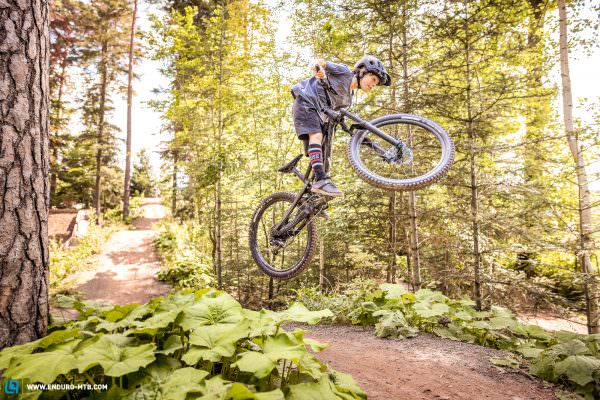
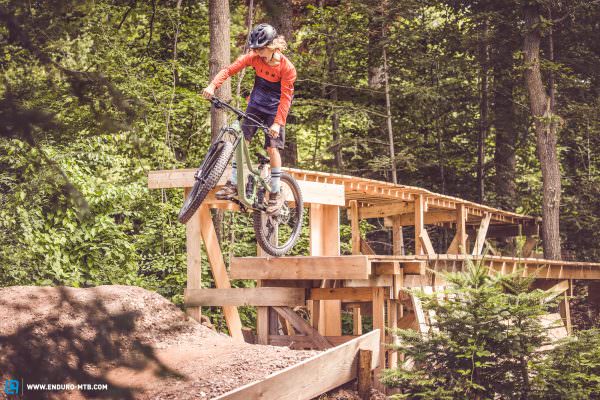
What to look for when choosing a kids bike
The type of rider has a significant influence on choosing the right bike. In addition, you have to consider the size, weight and, last but not least, your budget, the look of the bike and how well it can adapt and grow with your child. This is what to look for when choosing a trailer, balance bike or kids bike.
Size of the bike
First and foremost, a bike must fit for it to be fun, easy and safe for kids to ride. All the brands in our test field offer specific size recommendations for their models, going from 128 cm to 145 cm for the Woom OFF 5, for example. The brands design and build the bikes accordingly with the appropriate wheel and frame size. But there is more to it than just paying attention to the frame and wheel size! Some brands even promise that their bikes will grow with the child over several years. We’ll go into more detail about how well this works and whether it even makes sense further below.
Weight of the bike
A full-grown man weighing 85 kg may think that his mountain bike feels relatively light at 14 kg. The selection of analogue bikes in our test field that are suitable for a ten-year-old child who weighs only 35 kg and is 130 cm tall weigh between 7 and 13.7 kg, which is almost as much as the adult bike! Imagine your bike weighed 35 kg! This isn’t to be underestimated. So, unless it’s a mini downhill bike for shredders, a good bike for kids should be relatively light to do justice to easy riders. Alternatively, if it’s something you’d consider, it should have an electric motor.


Child-friendly components
Well-chosen kids’ bikes components not only keep the weight within reasonable limits but also consider the anatomy of young riders. Some kids’ bikes have handlebars with the same diameter as adult bikes on which you’ll obviously only be able to fit standard grips. It’s kind of like having to hold on to a handlebar as thick as your own forearm. We find that child-specific handlebars and grips with smaller diameters are the much better solution, and they are available! The same applies to the width of the cranks. On some bikes, the children almost have to perform a split as they stand and pedal with their short legs. The narrower constructions offered by some brands that allow kids to keep their feet closer together are excellent. On bikes with suspension, It’s not just the contact points but also the suspension that must be adapted. A suspension fork is only beneficial if it can be adjusted to work with the lighter weight of kids. Only air forks and shocks allow you to easily make adjustments yourself.

Safety
When learning new skills on a bike, crashes, scratches and the odd tear or two are just part of it and that’s okay. What you don’t want is to have the bike add unnecessary hazards! Children’s hands do not grip things with the same dexterity as those of dad or mom. You must ask yourself, is it easy to get caught on or pinched by the bolts, levers or components? In addition to sharp corners and edges, the electric motors of kids’ bikes can also present hazards. Does the motor reliably stop assisting as soon as the child’s feet stop pedalling or does it keep pushing? And how well do our rascals get along with the Mondraker Grommy (presented further below), which has no pedals but a twist-grip accelerator like a motorbike? Can it still be considered a bicycle?
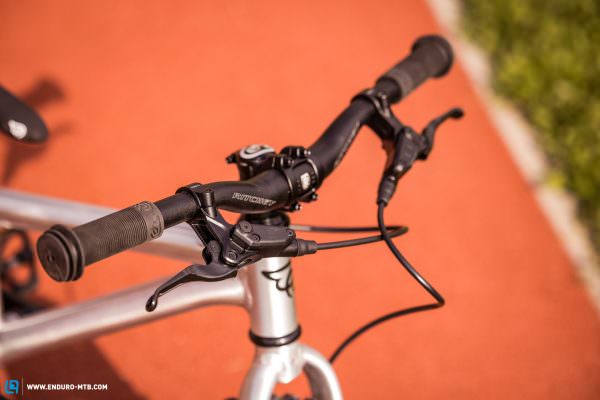
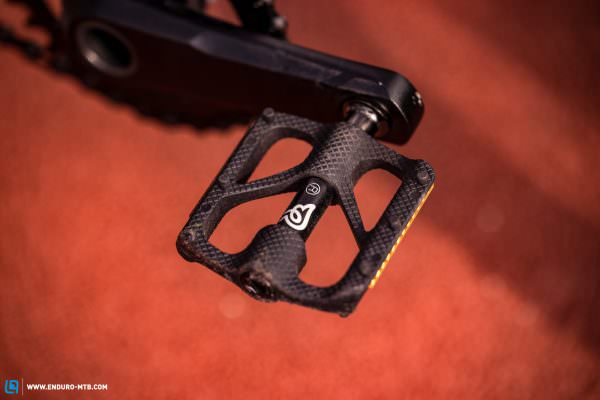
In addition to the question of safety, you should also know what’s allowed in your country. For example, Austria has stricter rules for attaching child seats than Germany. In Austria, child seats are only allowed behind the rider’s saddle. That means the Kids Ride Shotgun seat isn’t an option as the kid sits in front of the rider. In other countries, further restrictions and rules may apply. It’s up to you to find out and, if in doubt, ask the brand in question!
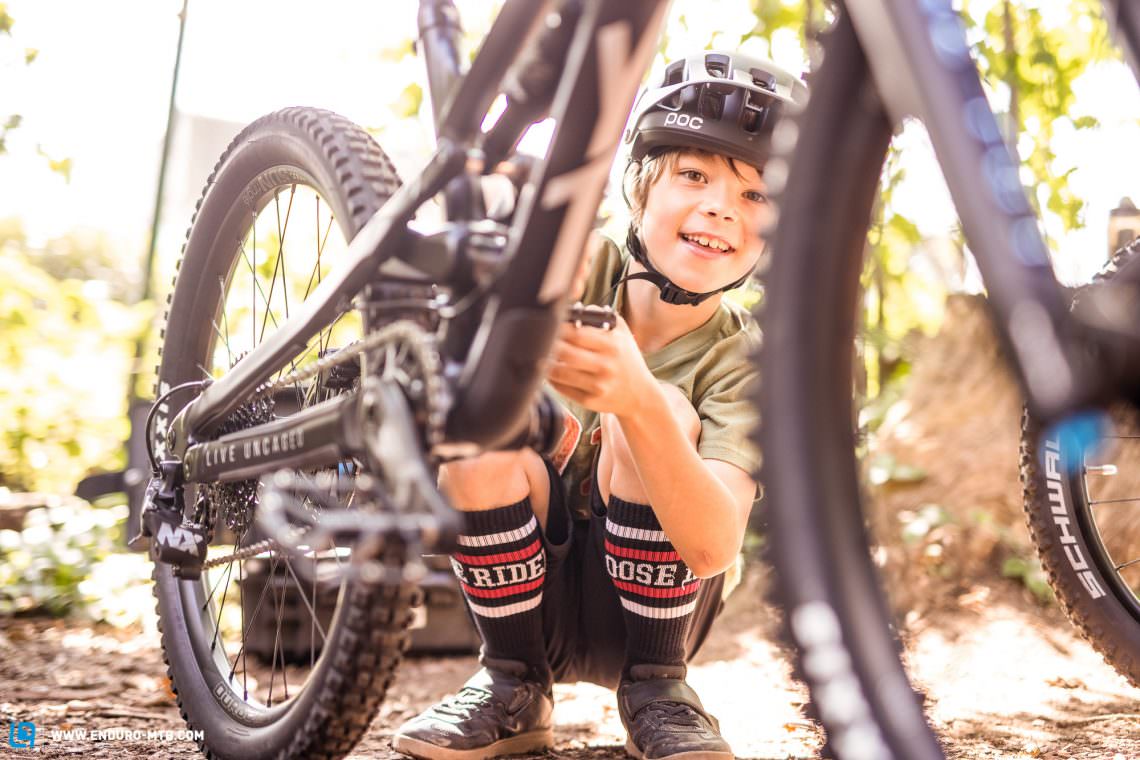
Adaptive?
Some brands promise that their balance bike or kids bike can grow with your child and thus remain usable for a long time. This is a nice idea and would be a lot easier on the wallet. However, the Leg&go balance bike was the only bike on test where the concept of an adaptive kids bike performed as promised, its modular wooden construction able to take on different shapes and sizes with amazing versatility. Other brands only accommodate minor adjustments such as switching to bigger wheels, while some models are explicitly suited to a narrow range of sizes, which makes sense! After all, the concept of a balance bike or kids bike that grows with the child over the years may not be what you need. Instead, your child will sometimes benefit more from a bike that really fits them perfectly for the time being. If the size is right and everything fits, children will probably learn faster and have more fun while they’re at it. If you deliberately buy a bike that’s too big so that it will last longer, the bulky dimensions are more likely to stop the fun instead of fuel it. The older kids get, the more difficult it is to implement systems that can grow with them. This is partly due to the fact that as their skills develop, the requirements they have of bikes will become more specific. For example, the YT JEFFSY PRIMUS is less of an everyday bike than a piece of specialised sports equipment with a very specific use case. If you put your little shredder on a bike like this, you shouldn’t make any compromises regarding the size, because the riding position and geometry will play an increasingly important role.
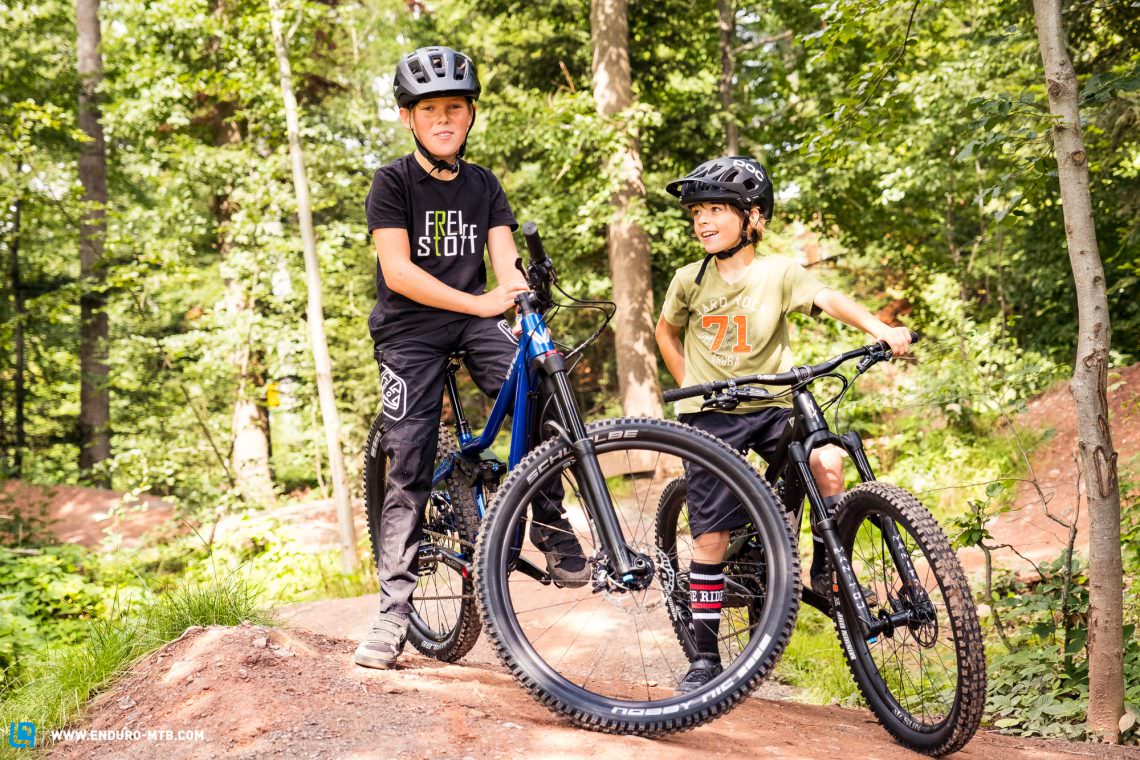
To keep your costs down, it’s worthwhile to pass bikes on as soon as your kids have grown out of them. If they’re in good condition, you will often get a fair price for them on second hand marketplaces! After all, the lighter weight of children causes less wear and tear, which means that the bikes should retain their value quite well. Better to sell and allow another kid to get in on the fun than letting a perfectly good bike gather dust in the basement just in case. Kids’ brand Woom will even buy their bike back when your kid has grown out of it and needs a bigger size. Even if you buy a used bike yourself, your kid will love it as long as it fits and rides well. Just cover up the scratches with a few cool stickers!
What our kids love
Which models best fulfil which concept and what are their respective strengths and weaknesses? Is your kid an easy rider or a shredder? This isn’t the kind of battle between bikes that we’re used to, because the diverse approaches taken by kids’ bikes can only be compared with one another to a limited extent. Every good solution can be darn cool in its own way! Instead, we want to help you to choose the bike that’s perfect for your kid right now from the best concepts available on the market, allowing them to roll into a bright, bike-filled future!
All tested kids bikes, trailers and balance bikes

Kid’s Bike Trailer | from 3 months to 5 years
1.390€ | Read the review
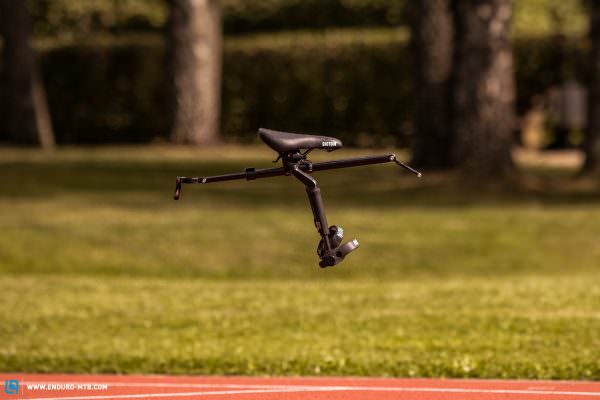
MTB-child seat | from 2 years up to 27 kg
220€ | Read the review
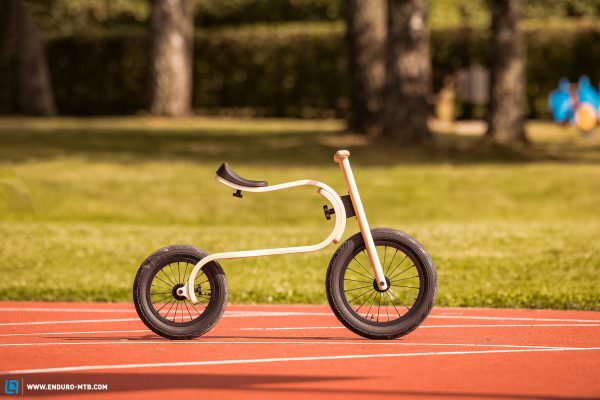
balance bike | Size from 85–110 cm
295€ | Read the review

e-balance bike | Size from 95–135 cm
800 | € Read the review
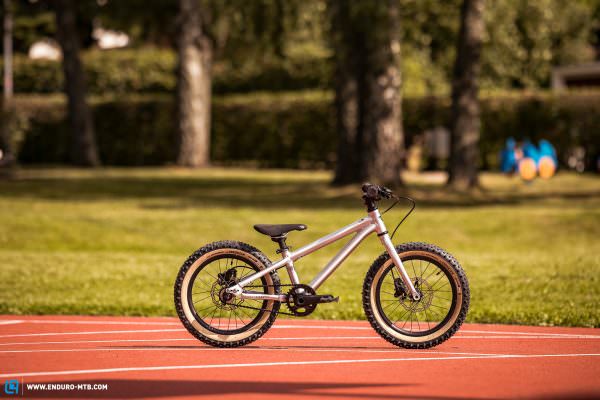
kids bike | Size from 100–120 cm size
899€ | Read the review
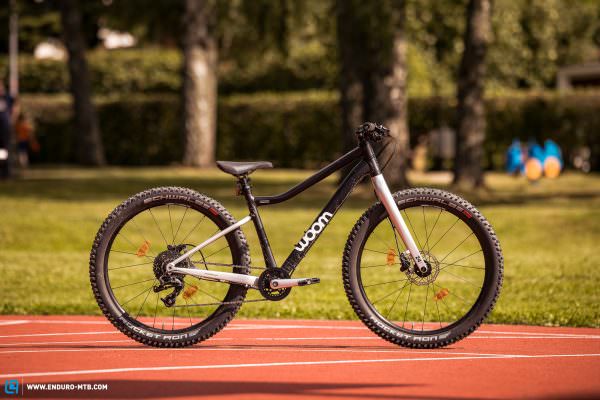
kids bike | Size from 128–145 cm
799/950€ | Read the review

kids e-bike | Size from für 128–145 cm
2.899€ | Read the review
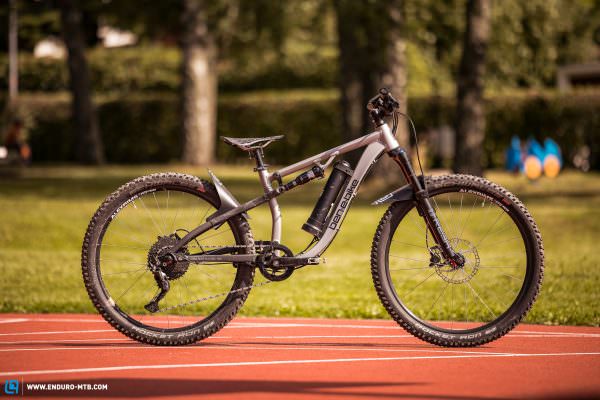
kids e-bike | Size from 140–165 cm
2.999€ | Read the review

kids bike | Size from 122–133 cm
1.899€ | Read the review

kids bike | Size from 130–150 cm
2.399€ | Read the review
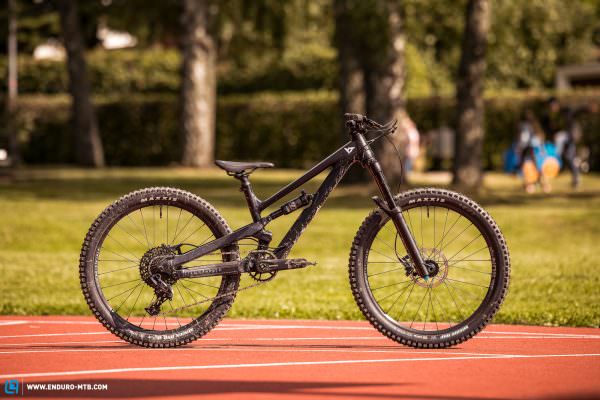
kids bike | Size from 135–150 cm
2.199€ | Read the review
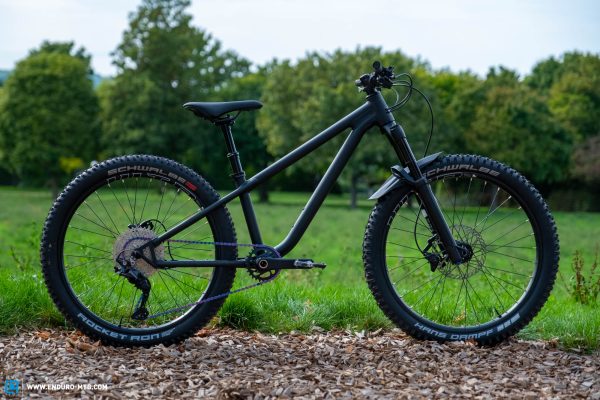
kids bike | Size from 125–145 cm
1.547€ | Read the review
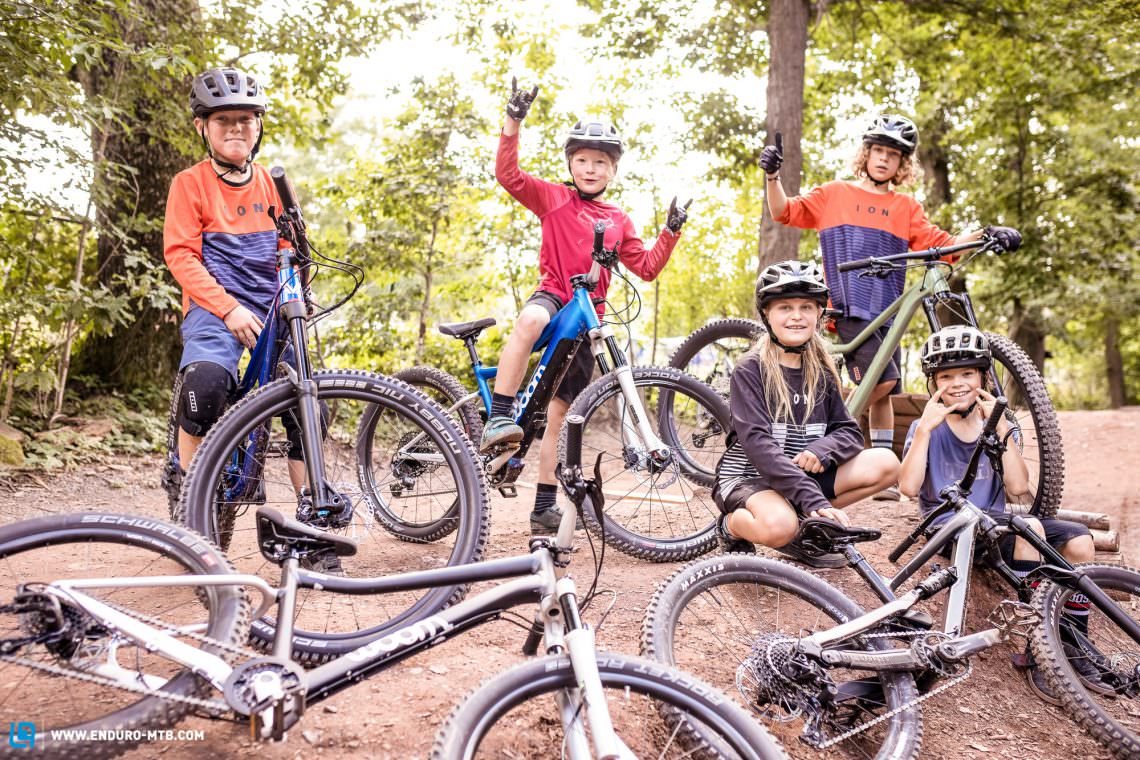
Conclusion
There has never been a better time for kids to conquer the world on two wheels! The range of kids’ bikes is huge and the best executed models often aren’t the most expensive. Regardless of whether your kid is a cool, easy rider or an absolute shredder, you can find a suitable bike for every type that is sure to lure them outside! Doing so is fun, helps kids develop and gives you more quality time as a family. On two wheels, your kids are on a steep trajectory into a bright future!
Did you enjoy this article? If so, we would be stoked if you decide to support us with a monthly contribution. By becoming a supporter of ENDURO, you will help secure a sustainable future for high-quality mountain bike journalism. Click here to learn more.
Words: Moritz Geisreiter, Peter Walker, Felix Stix Photos: Peter Walker, Daniel Geiger




